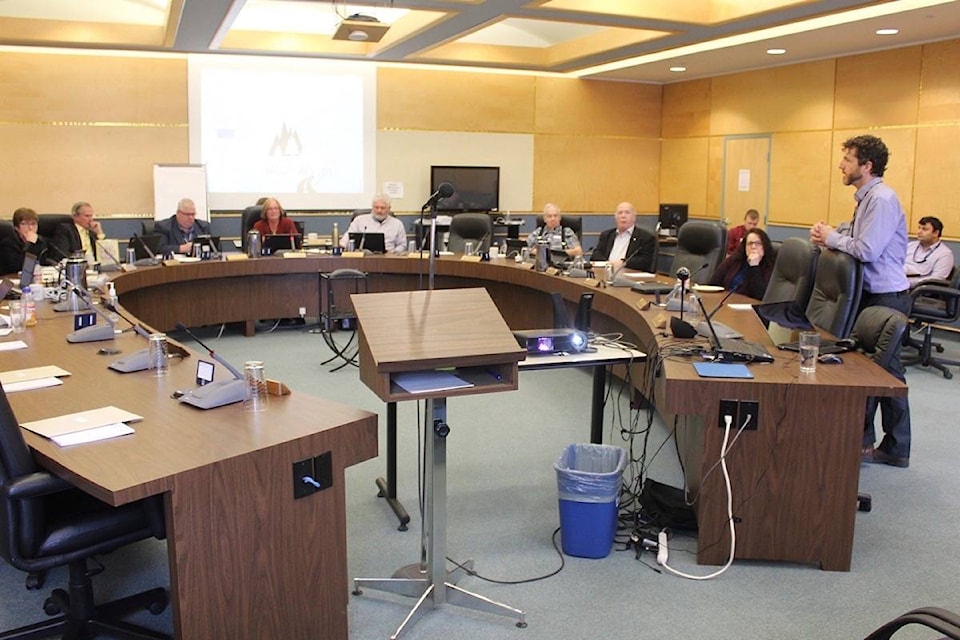Emergency preparedness — for everyone — was a key highlight and recommendation of the Cariboo Regional District’s wildfire community consultations report.
The report, using information gathered over a 12 week process from community consultations and surveys across the CRD, contained 75 recommendations on how the CRD could improve both in case of another wildfire or other disasters.
The report was prepared by Tim Conrad of Butterfly Effect Communications, who led and guided much of the consultations for the CRD. The report is over 300 pages long, and is available on the CRD’s website.
Overall, he said, communications was one of the main themes residents brought up again and again.
It was the “hottest topic,” said Conrad to the CRD directors.
Alongside communications, wildfire fighting, recovery, and prevention were other topics much discussed, as well as evacuation orders and alerts, and permitting, said Conrad.
The immediate needs of the community, is mental health supports, financial assistance focused on survival needs, and preparedness for the next disaster, according to the report.
Among the recommendations, was a call to look at residents as assets, not liabilities, in disaster situations in the future.
A common theme among many affected during the wildfires - ranchers and rural residents chief among them - were that they were told to get out of the way when they felt their local expertise and knowledge could provide assistance during the situation.
It’s a theme that the report acknowledges, and provides a recommendation for:
“Understand that residents in rural areas served an important role in past years to assist in emergency response, and can in the future.”
While it cautions away from an endorsement of “stay and defend,” which has, the report notes, resulted in multiple deaths in Australia, it does suggest that “while their roles may be limited to reduce liability, they should not be completely eliminated from being a resource. They can be used to transport messages, parts, and supply resources.”
Other reccomendations included implementing community liasons - often locals, or communications officials in each area who can assist and provide local knowledge during emergency situations.
Permits were also a much discussed issue, with the report recommending possibly an access permit system where residents could pre-qualify prior to wildfire season.
Generally, said Conrad, many of the recommendations are on a smaller-scale, that can be adopted fairly quickly. Others may take two to three years to implement should the CRD’s Emergency Preparedness Committee, who will be dissecting the report, chose to adopt them.
“It is a challenge for the regional districts to adapt and be ready, coming out of this to follow these recommendations through. It is a lot of extra work and which ones do you do first and next and so on. They do have their work cut out for them, but the recommendations are mostly smaller, I wont say easily attainable but they come with less work that some other reports of this type,” he said.
Overall, while some recommendations address the immediate and long term needs of the community with recovery, it comes down to being prepared for the next disaster.
“To me it comes down to that culture of preparedness and that is from residents, and business, not just governments. Everyone needs to be thinking how they can be prepared. What can I do to be prepared? What can i do to prevent this in the future? Absolutely everything needs to be ingrained in the communities and all of the organizations within those communities to ensure they are ready, because all the modelling right now suggests this is quite likely again.”
The report is available at cariboord.bc.ca under the agenda section for March 16.
